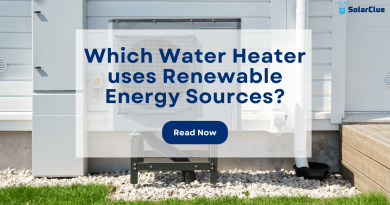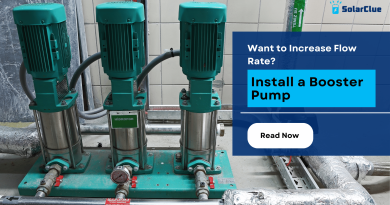How can we Reduce Air Pollution?
Air pollution is a big issue, which can be harmful to both human health and the environment. So how can we reduce air pollution in India? We must know ways to control it. Otherwise, it would be a difficult place for the generations to come.
In this blog post, we’ll explore why controlling air pollution is essential and the various air pollution control techniques. Let’s get started.
Table of Contents
- 1 What do you mean by air pollution?
- 1.1 How does air get polluted?
- 1.2 How to control air pollution?
- 1.2.1 What is a heat pump and how does it work?
- 1.2.2 How can a heat pump help you reduce air pollution?
- 1.2.3 What are the other benefits of a heat pump system?
- 1.2.4 1. Cost-Effective
- 1.2.5 2. Long Lifespan
- 1.2.6 3. Reduced Water Wastage
- 1.2.7 4. Positive Environmental Impact
- 1.2.8 5. Efficient in Cold Climates
- 1.2.9 6. Manual Temperature Setting
- 1.2.10 7. Availability in Different Sizes
What do you mean by air pollution?
Air pollution refers to the presence of harmful substances in the air we breathe, such as particulate matter, nitrogen oxides, sulfur dioxide, and carbon monoxide. These pollutants can have severe impacts on human health, causing respiratory problems, heart diseases, and even cancer. Additionally, air pollution contributes to climate change, ozone depletion, and the degradation of our environment.
How does air get polluted?
Air pollution can originate from various sources, including:
- Vehicles: Emissions from cars, trucks, and other modes of transportation contribute significantly to air pollution, particularly in urban areas.
- Industrial activities: Manufacturing processes, power plants, and other industrial operations release harmful pollutants into the air.
- Burning of fossil fuels: The combustion of coal, oil, and natural gas for electricity generation and heating purposes generates air pollutants.
- Agricultural activities: Certain farming practices, such as the use of pesticides and fertilizers, can release pollutants into the air.
- Household activities: Even everyday activities like cooking, cleaning, and using certain products can contribute to indoor air pollution.
How to control air pollution?
There are many air pollution control techniques that can be adopted by Governments and industries. These are large scale ways to prevent air pollution. Like Governments can come up with policies, or industries may adopt sustainable practices to reduce air pollution. But what can you do to reduce air pollution?
Do you know the electric appliances in Indian households consume a lot of electricity to operate? This electricity is produced by burning of fossil fuels. This leads to emission of harmful pollutants, which are not only bad for the environment, but also for human health. So adopting energy-efficient appliances like a heat pump is a way to reduce air pollution.
What is a heat pump and how does it work?

Heat pump is one of the air pollution control devices. It is a water heater, just like a geyser. But it differs in the way these two appliances work. A geyser uses direct electricity to heat the water. Whereas, a heat pump uses electricity to transfer the heat.
It consists of three main components:
- Exhaust fan: This fan draws in air from the surrounding environment.
- Compressor: The compressor circulates refrigerant through the system, facilitating the transfer of heat from the air to the water.
- Storage tank: The heated water is stored in an insulated tank, ready for use.
The heat pump system works by extracting heat from the surrounding air and transferring it to the water in the storage tank. This process is highly energy-efficient, as it consumes 75% less electricity than geysers.
How can a heat pump help you reduce air pollution?
Heat Pump works on the principle transferring heat from one place to another. As they don’t use direct electricity to generate heat, it consumes less electricity. So it reduces the burning of fossil fuels, leading to prevention of air pollution.
Not just that, it reduces greenhouse gas emissions and carbon footprint. So by installing a heat pump, you are contributing towards reducing air pollution, and reducing your carbon footprint.
What are the other benefits of a heat pump system?
Other than reducing air pollution, heat pumps offer other benefits as well. They are:
1. Cost-Effective
Heat pumps have high upfront cost. However, they make up for it through lower operating costs. Heat pumps transfer heat rather than generating it directly. This uses far less electricity – up to 75% less. Over its 10-15 year lifespan, a heat pump can save you hundreds or even thousands in energy costs. So it is actually a cheaper alternative to other traditional water heaters like geysers.
2. Long Lifespan
With proper maintenance, heat pumps last 15 years or more – significantly longer than standard electric geysers (8-10 years). So there is no need for replacement for a long time. This extended life cycle also contributes to it being a cost-effective option.
3. Reduced Water Wastage
Traditional water heaters constantly heat and reheat the same water, leading to significant energy losses. Heat pumps heat water more efficiently, so you don’t have to run the tap as long waiting for hot water. This conserves water, especially in households with long pipe runs.
4. Positive Environmental Impact
By consuming significantly less electricity than conventional water heaters, heat pump water heaters have a lower carbon footprint and contribute to reducing greenhouse gas emissions. This positive environmental impact is achieved by relying on renewable energy sources (ambient air) and minimizing the use of fossil fuels for power generation. Additionally, the longer lifespan of these systems further reduces the environmental impact associated with manufacturing and disposing of water heaters.
5. Efficient in Cold Climates
One common misconception about heat pump water heaters is that they may not perform well in colder climates. However, modern heat pump water heaters are designed to be efficient even in low temperatures. They can effectively extract heat from the surrounding air, even when the temperature drops below freezing. This makes heat pump water heaters a viable and energy-efficient option for hot water needs in various climates, including colder regions.
6. Manual Temperature Setting
Most heat pumps allow you to change temperature as per your requirements. This ensures you have hot water when needed without wasting energy by overheating the water beyond your requirements.
7. Availability in Different Sizes
Heat Pumps normally have an indoor and an outdoor unit. But many homes in India, specially in big cities, may not have that space available. For that, a single-unit heat hump is designed. It is also called Integrated Heat Pump.
Conclusion
Air pollution is a pressing issue in India. It affects our planet and human health. We must all do out bit to reduce it. One of the best ways of doing it is by adopting appliances like heat pumps, which consume less electricity. So it is time for India to invest in heat pumps for a sustainable future, for ourselves and the generations to come.
Visit SolarClue® to see the best heat pump water heaters. SolarClue® is an online marketplace where solar energy products are sold at discounts up to 50%.




